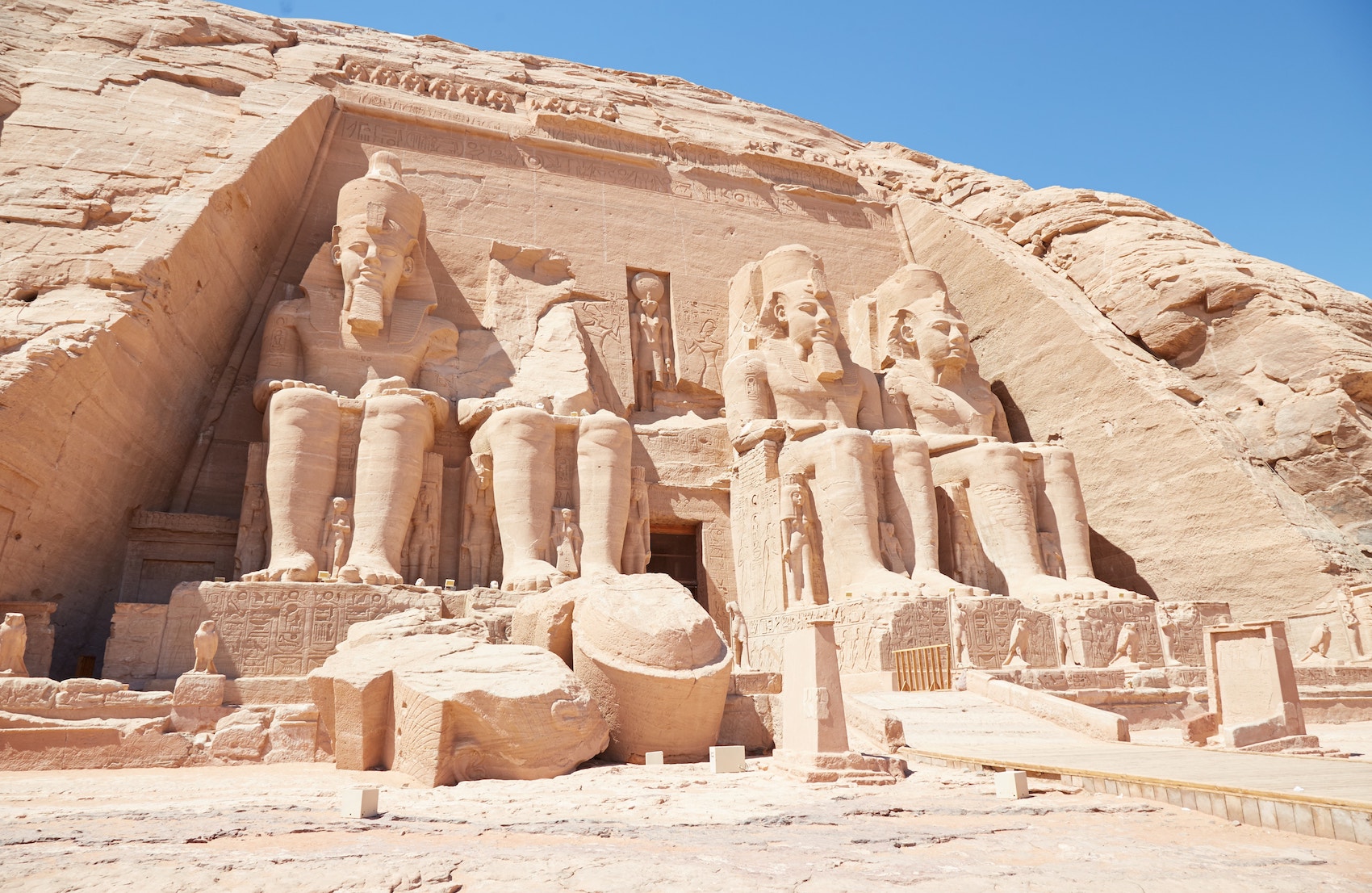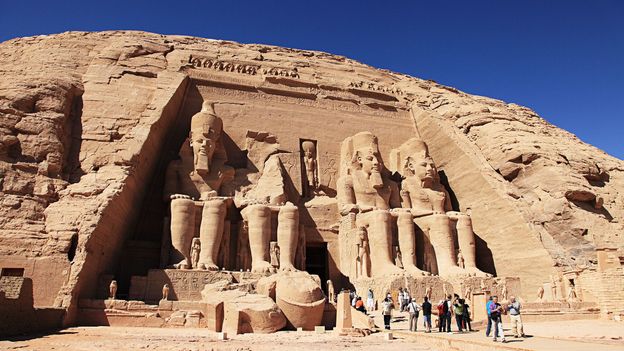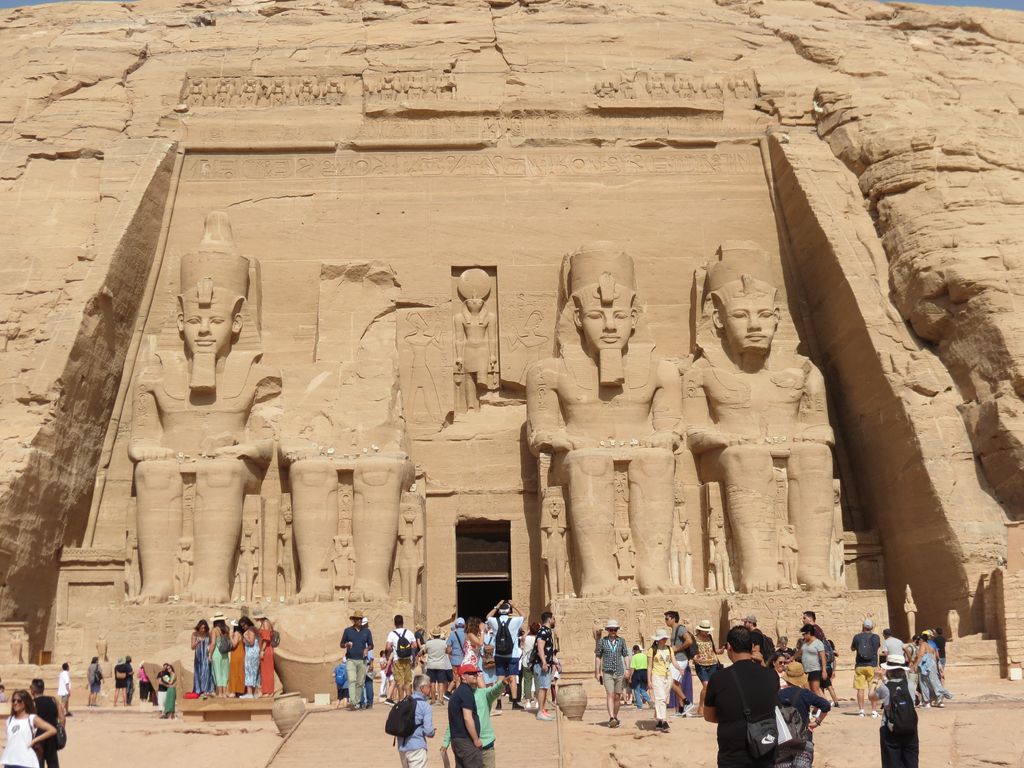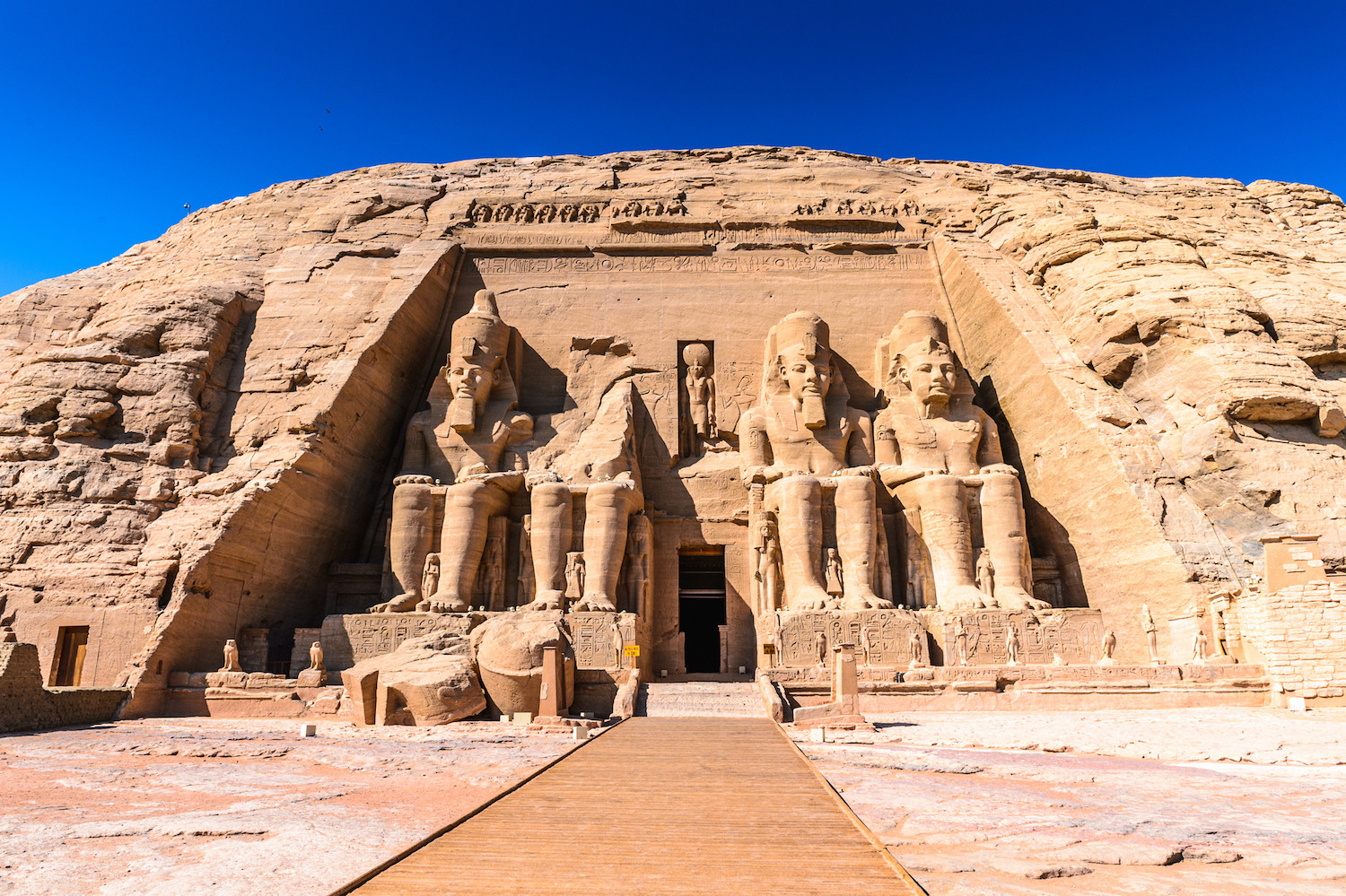The Spectacular Abu Simbel Temples: A Journey Back in Time

I. The significance and history of the Abu Simbel Temples
The Abu Simbel Temples are a testament to the grandeur and power of ancient Egypt. Located in southern Egypt, near the border with Sudan, these temples have stood for over 3,000 years, captivating visitors with their impressive architecture and rich history.
Built during the reign of Pharaoh Ramesses II in the 13th century BCE, the Abu Simbel Temples hold immense historical and cultural importance. These temples were constructed to showcase Pharaoh Ramesses II's greatness and commemorate his victory at the Battle of Kadesh. The temples were dedicated to various gods, with the larger one dedicated to Ramesses II himself and the smaller one to his beloved queen, Nefertari.
The Abu Simbel Temples were a symbol of the pharaoh's power and divinity and a reminder of Egypt's strength and prosperity during that era. These temples were strategically built at the southernmost border of Egypt to demonstrate the pharaoh's authority and to intimidate potential enemies.
One of the remarkable aspects of the Abu Simbel Temples is that they were not only masterpieces of architecture but also engineering marvels. The temples were carved out of solid rock, with intricate detailing and massive statues lined the façade. The most famous feature of the temples is the four colossal statues of Ramesses II seated on thrones, each reaching a height of about 65 feet. These statues were designed to awe and inspire all who approached the temples.
In the 1960s, a monumental effort was made to relocate the temples to higher ground to protect them from the rising waters of the newly built Aswan High Dam. The successful relocation of the temples was a significant achievement in archaeology and preservation, allowing future generations to continue marvelling at these ancient wonders.
Today, the Abu Simbel Temples are a UNESCO World Heritage Site and attract thousands of visitors worldwide. Stepping into these temples is like taking a journey back in time, immersing oneself in the magnificence and grandeur of ancient Egypt. The intricate carvings, vibrant wall paintings, and towering statues glimpse the religious beliefs, rituals, and daily life of the pharaohs and their subjects.
Visiting the Abu Simbel Temples is an experience unlike any other. The sheer size and beauty of these temples leave visitors in awe and remind us of the immense achievements of ancient civilizations. It is a must-visit destination for history enthusiasts, archaeology buffs, and anyone seeking a deeper understanding of the wonders of the past.
To learn more about the Abu Simbel Temples, you can visit their Wikipedia page and delve further into the fascinating history and significance of these remarkable ancient structures.

II. Construction of the Temples
The Pharaoh Ramses II and his legacy
The construction of the Abu Simbel Temples is a testament to the grandeur and power of Pharaoh Ramses II. Ramses II, also known as Ramses the Great, reigned over Egypt for 66 years, from 1279 to 1213 BCE. He was one of the most influential and prolific pharaohs in Egyptian history, known for his military campaigns, architectural achievements, and cultural accomplishments.
Ramses II aimed to leave a lasting legacy to solidify his historical place. He commissioned numerous grand building projects across Egypt, including temples, palaces, and statues. The Abu Simbel Temples are perhaps his most impressive architectural achievement and a true marvel of ancient engineering.
Building the Great Temple of Abu Simbel
The Great Temple of Abu Simbel, dedicated to the gods Ra-Horakhty, Ptah, and Amun, is the larger of the two temples and the most iconic. The construction of this temple involved carving the entire structure out of a sandstone cliff. The temples were built on the western bank of the Nile River, near the border between Egypt and Sudan.
The Great Temple features four colossal statues of Ramses II, each standing around 67 feet tall. These statues were intricately carved to portray the pharaoh as a powerful and divine ruler. The temple's facade also showcases impressive reliefs and hieroglyphics depicting scenes from Ramses II's military campaigns and religious rituals.
Construction of the smaller Temple of Hathor
Adjacent to the Great Temple is the smaller Temple of Hathor, dedicated to the goddess of love, beauty, and joy. This temple was constructed to tribute to Ramses II's beloved wife, Queen Nefertari. The temple entrance is adorned with six statues, four depicting Ramses II and two portraying Queen Nefertari.
Like the Great Temple, the smaller Temple of Hathor features stunning reliefs and hieroglyphics that tell stories of ancient Egyptian mythology and the pharaoh's devotion to the gods. Both temples' architectural details and artistic craftsmanship are a testament to the skill and expertise of the ancient Egyptian artisans who laboured to bring Ramses II's vision to life.
These temples not only stand as incredible architectural achievements but also bear witness to the history and culture of ancient Egypt. They have been recognized as a UNESCO World Heritage site since 1979 and continue to awe visitors worldwide with their sheer beauty, historical significance, and timeless charm.
To learn more about the Abu Simbel Temples and their historical significance, visit this Wikipedia page.

III. Architecture and Artistry
The Abu Simbel Temples are not only significant for their historical and cultural importance but also for their remarkable architecture and artistry. Here are some aspects that make these temples truly spectacular:
Exploring the unique architectural features of the temples
The Abu Simbel Temples showcase the mastery of ancient Egyptian architecture. Here are some key features:
1. Monumental Facades: The temples have impressive facades, towering stone walls, and meticulously carved details. The size and grandeur of these structures are awe-inspiring.
2. Precise Alignment: One of the most remarkable architectural achievements of the Abu Simbel Temples is their precise alignment. The temples were meticulously positioned to align with the rising sun during specific times of the year, illuminating the inner sanctuaries.
3. Colonnaded Halls: The interiors of the temples boast spacious collonaded halls with towering columns adorned with intricate carvings. These halls create a sense of grandeur and give visitors a glimpse into the opulence of ancient Egyptian architecture.
The colossal statues of Ramses II
One of the most iconic features of the Abu Simbel Temples is the colossal statues of Pharaoh Ramses II. Here are some details about these impressive statues:
1. Great Temple: The Great Temple at Abu Simbel features four colossal statues of Ramses II seated on thrones at the entrance. Each statue stands approximately 20 meters tall and represents the power and authority of the pharaoh.
2. The Smaller Temple: The Smaller Temple has two statues, also known as the Temple of Hathor and Nefertari. The temple's facade showcases four statues, two of Ramses II and two of his queen, Nefertari. These statues are smaller in scale but equally impressive.
3. Intricate Detailing: The statues are intricately carved, with attention to detail on the facial features, clothing, and accessories. The larger-than-life statues are a testament to the skill and craftsmanship of the ancient Egyptian artisans.
Detailed reliefs and inscriptions inside the temples
The interiors of the Abu Simbel Temples are adorned with detailed reliefs and hieroglyphic inscriptions. Here's what you can expect to see:
1. Historical Narratives: The walls of the temples depict scenes from ancient Egyptian history, such as military triumphs, religious rituals, and the coronation of pharaohs. These narratives provide valuable insights into the beliefs and traditions of ancient Egypt.
2. Religious Symbols: Hieroglyphic inscriptions inside the temples include religious symbols and texts dedicated to various gods and goddesses. These inscriptions showcase the significance of religious beliefs in ancient Egyptian culture.
3. Preservation Efforts: The reliefs and inscriptions have been well-preserved over the centuries thanks to ongoing restoration and conservation projects. Visitors can witness the beauty and intricacy of these ancient artworks up close.
The architecture and artistry of the Abu Simbel Temples are truly remarkable, offering visitors a glimpse into the rich history and cultural heritage of ancient Egypt. Exploring these temples is like stepping back to a world of pharaohs, gods, and elaborate architectural marvels.

IV. Relocation of the Temples
The UNESCO-led rescue mission
The Abu Simbel Temples, located in southern Egypt, are famous for their historical and cultural significance and the incredible engineering feat that took place in the 1960s. Due to the construction of the Aswan High Dam and the subsequent rising waters of Lake Nasser, the temples faced the threat of being submerged, which prompted an international effort led by UNESCO to save and relocate them to higher ground.
The engineering feat of moving the temples to higher ground
The relocation of the Abu Simbel Temples was a massive undertaking that required meticulous planning and execution. The temples, weighing over 2,000 tons each, had to be moved in one piece to preserve their architectural integrity. The project was an international endeavour that involved experts from various fields, including engineers, archaeologists, and construction workers.
The engineering team devised an innovative solution to move the temples to higher ground. The process involved cutting the temples into large blocks weighing around 30 tons and then reassembling them on an artificial hill around 200 meters from their original location. The relocation took four years to complete, from 1964 to 1968.
The team faced several challenges along the way, including the transportation of the massive temple blocks and the precise alignment of the reconstructed temples. However, their efforts paid off, and the Abu Simbel Temples were successfully relocated without disrupting their original layout and orientation.
The relocation of the Abu Simbel Temples was a technical achievement and a testament to the international collaboration and commitment to preserving the world's cultural heritage. Today, visitors can marvel at the temples' beauty and grandeur in their new location, safe from the threat of the rising waters of Lake Nasser.
To learn more about the incredible engineering feat of relocating the Abu Simbel Temples, visit this Wikipedia page.

V. Symbolism and Religious Significance
The Abu Simbel Temples are remarkable for their architectural grandeur, deep symbolism, and religious significance. Here are some key aspects of their symbolism:
The alignment of the temples with solar events
One of the most awe-inspiring aspects of the temples is their alignment with solar events. The Great Temple of Ramses II is constructed so that twice a year, on February 22 and October 22, the sun's rays penetrate the inner sanctum and illuminate the statues of the three gods seated on the central altar. This phenomenon is a testament to the ancient Egyptians' knowledge of astronomy and their deep reverence for the sun god, Ra.
The smaller temple dedicated to Queen Nefertari is also aligned with solar events. However, due to its smaller size and different orientation, the illumination occurs yearly on Queen Nefertari's birthday, February 22. This alignment was designed to honour the queen and the goddess Hathor, associated with love, beauty, and fertility.
The dedication to the deities: Amun-Re, Ra-Horakhty, and Hathor
The Abu Simbel Temples were primarily dedicated to three important Egyptian deities: Amun-Re, Ra-Horakhty, and Hathor. Each god had a specific role and significance in the ancient Egyptian pantheon.
Amun-Re was the king of the gods, associated with the sun and creation. By situating the temples so that the first rays of the rising sun would illuminate the statues of Ramses II and the deities, the ancient Egyptians established a direct connection between the pharaoh and the divine.
Ra-Horakhty, a combination of the sun god Ra and the Horus of the Horizon, represented the rising sun and its life-giving power. As the sun rose over the temple, it was seen as a symbol of renewal and rebirth.
Hathor, the goddess of love, beauty, and fertility, was also revered at Abu Simbel. The temple dedicated to Queen Nefertari was specifically dedicated to her. The goddess was depicted with a cow's head or as a woman with cow horns, emphasizing her nurturing and maternal nature.
The dedication to these deities and the alignment with solar events was a religious expression and a political statement. It showcased the pharaoh's close relationship with the gods and affirmed his divine authority and power.
To truly appreciate the symbolism and religious significance of the Abu Simbel Temples, it is essential to visit them in person and witness their alignment with the sun's rays. It is a journey back in time, immersing oneself in the beliefs and spirituality of the ancient Egyptians.
